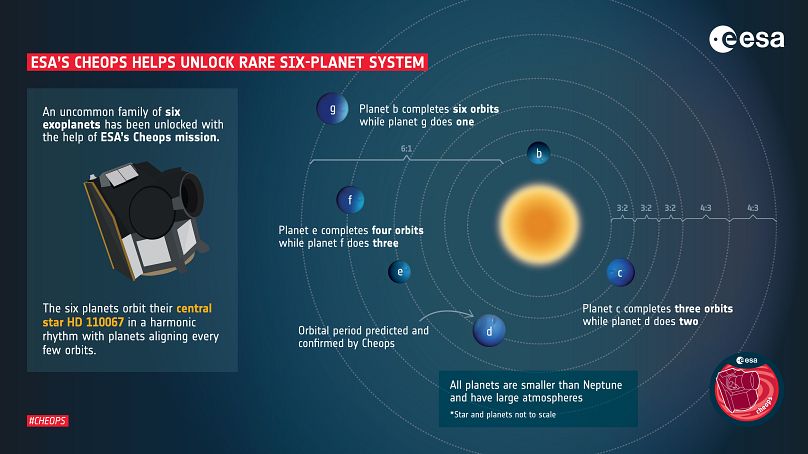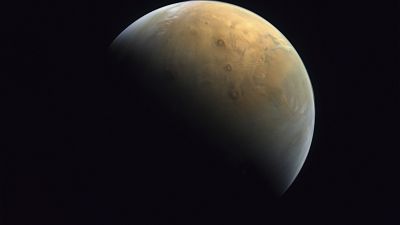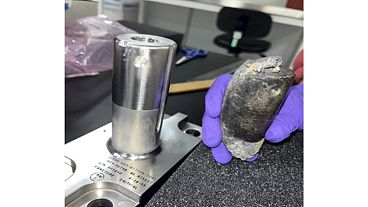A European space mission found an orbitally resonant system, which tells astronomers about the formation and evolution of the planetary system.
The European Space Agency (ESA) has a number of missions ongoing to discover and study exoplanets, which are planets outside of our solar system.
One of those missions, Cheops (CHaracterising ExOPlanet Satellite), has uncovered a rare star system that lies around 100 light-years away.
It’s an important find because it can tell us about the formation and evolution of the planetary system, according to ESA.
Cheops has found the star, named HD110067, has at least six planets orbiting it, and these planets’ orbital configuration shows that the system is largely unchanged since it was formed, more than a billion years ago.
"We think only about one per cent of all systems stay in resonance," said Rafael Luque from the University of Chicago’s astronomy department. That’s why HD110067 is special and invites further study.
"It shows us the pristine configuration of a planetary system that has survived untouched".
Dips in the star’s brightness were first detected by NASA’s Transiting Exoplanet Survey Satellite (TESS) in 2020 - a sign there may be planets passing between the star and our view of its light.
Initially, astronomers thought the data revealed two possible planets, but two years later, new data from TESS suggested the initial hypothesis didn’t make sense, but presented evidence of two different possible planets instead.
"That’s when we decided to use Cheops. We went fishing for signals among all the potential periods that those planets could have," said Luque.
Planets in 'orbital resonance'
The planets are in orbital resonance, meaning their orbital periods can be expressed as a ratio of two integers.
In the case of HD110067, the outermost planet was found to take 20.519 days to orbit, almost exactly 1.5 times the orbital period of the next planet with 13.673 days. This in turn is almost 1.5 times the orbital period of the inner planet, with 9.114 days.
Matching this data to the yet unexplained data, the team were able to identify there were three more planets in the system.
"Cheops gave us this resonant configuration that allowed us to predict all the other periods. Without that detection from Cheops, it would have been impossible," explained Luque.
Orbitally resonant planetary systems are very rare, because the vast majority of systems have had the natural evolution of the planetary orbits interrupted. This could be due to a massive planet in the system affecting smaller ones with its greater gravitational effect, a close encounter with a passing star, or even an impact event on one of the planets.
"As our science team puts it: Cheops is making outstanding discoveries sound ordinary. Out of only three known six-planet resonant systems, this is now the second one found by Cheops, and in only three years of operations," said Maximilian Günther, ESA project scientist for Cheops.
ESA's other dedicated exoplanet missions are Plato and Ariel.
Plato is planned to launch in 2026 and will use its array of cameras to study Earth-like exoplanets in orbits up to the habitable zone of Sun-like stars, measuring the planet's size and discovering exomoons and rings around them.
Ariel meanwhile is planned to launch in 2029 and will analyse the chemical makeup of exoplanet atmospheres.
The results from all three missions should reveal what exoplanets and their systems are like, and tell us how unique our own solar system is.




